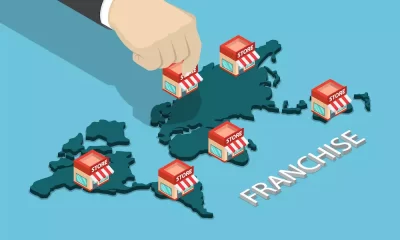Management
Are You Taking Cost-Cutting in Manufacturing Too Far?
Starting up any business can be pretty expensive, and spending too much on your nascent development can affect your long-term bottom line in many ways. It could be argued that there’s nowhere in which this is truer than in manufacturing. But taking cost-cutting too far can damage your factory in the long run. Here are the related mistakes businesses are often making.
Starting up any business can be pretty expensive, and spending too much on your nascent development can affect your long-term bottom line in many ways. It could be argued that there’s nowhere in which this is truer than in manufacturing. But taking cost-cutting too far can damage your factory in the long run. Here are the related mistakes businesses are often making.
Getting weak equipment
Perhaps the most common error made when factory owners want to cut costs is that they buy cheap equipment – often at the expense of quality and efficiency. It’s understandable that this is where many would turn, considering that the costs of getting equipment are often the most daunting upfront cost. And trying to find savings is definitely something you should do.
But if you’re not putting a focus on the quality of the output of the equipment, as well as the relative speed in which you can do it, then your business will suffer in the long run. Also, the cheap stuff often costs more in the long run when it comes to repairs and maintenance, anyway.
Offshoring
Don’t get me wrong: offshoring can work really well for a lot of companies. It helps keep the cost of some manufacturing operations down while introducing your business to new markets. But a lot of businesses only do it because it’s what big corporations do – and what they do isn’t necessarily good for your business in the long run.
The costs of transport are skyrocketing, the quality from the practice is often debased, and the concomitant exploitation of cheap labor often leaves a foul taste in the mouth. Plus, consumers are beginning to care more and more about where their products are manufactured. You should consider reshoring your manufacturing processes. For example, you can look into Chinese injection molding alternatives locally.
Cutting salaries
No no no no no. I’m aware that this isn’t exactly the most elegant way to approach the issue of cutting salaries. But seriously: no. And I’m not taking a (completely) humanitarian approach here: it’s strictly business. You may see some short-term boosts in profit when you cut the costs of labor. But it won’t work out for you in the long term.
When you cut salaries, you ruin morale. You may even force some of your employees to seek greener pastures. This all results in a detrimental impact on workplace efficiency. Productivity will always take a hit when worker satisfaction is decreased, and what could ruin satisfaction more than a decrease in pay? If anything, you should be increasing salaries or introducing incentive pay, though it’s worth noting that productivity isn’t all about salary.
Skipping green practices
Installing energy-efficient lighting. Overhauling the HVAC system. Optimizing your air compressors. Introducing a program or a team that monitors energy activity. Getting an energy audit. It all costs money – money that you need to put into other things, right?
The fact is that green practices will help you save a lot of money in the long run. More money than you think gets thrown away via the waste of your average production process. Plus, if you’re not careful about your green measures, you may even find yourself fined, depending on your state’s laws regarding pollution.






